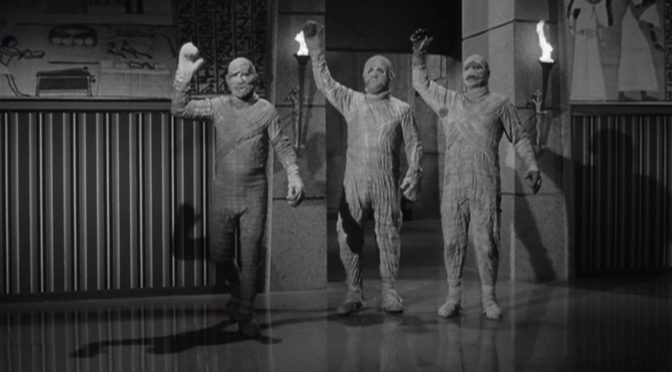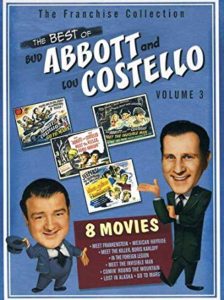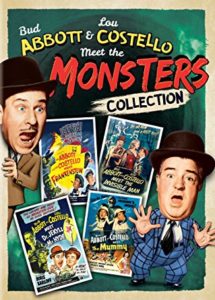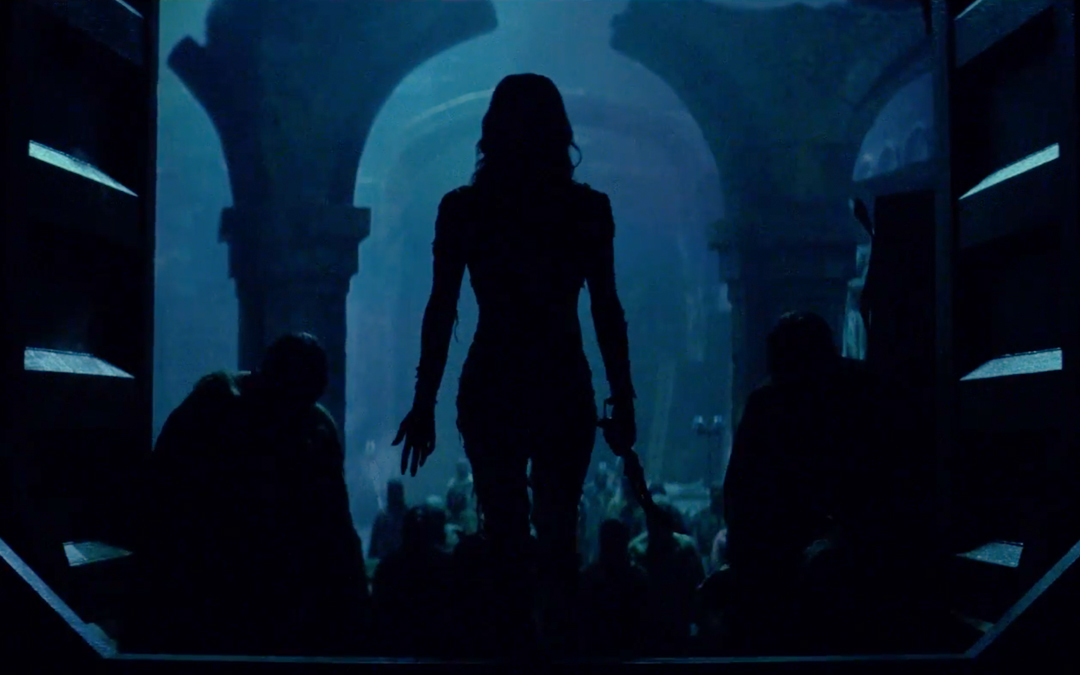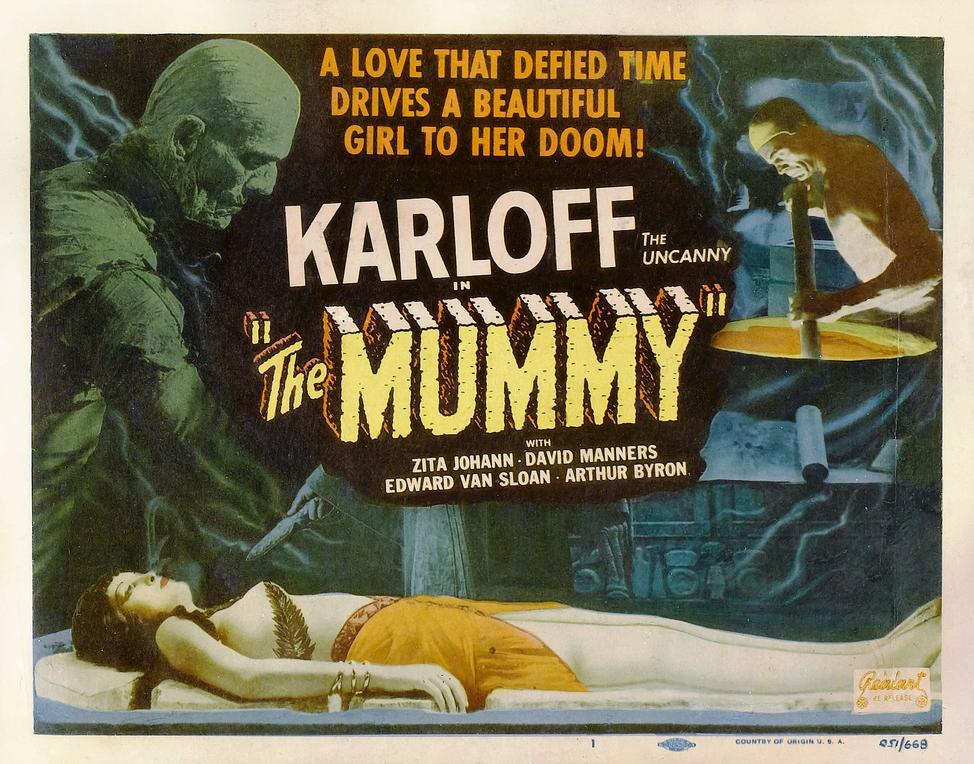#5. Abbott and Costello Meet The Mummy (1955)
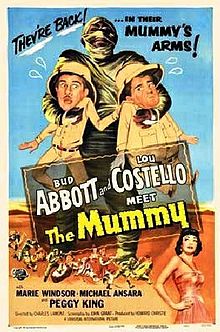 Nature of Shame:
Nature of Shame:
It’s been a loooooong time since I last revisited the Abbott and Costello Meet… movies. I’ll try to remove my nostalgia goggles.
Hooptober Challenge Checklist:
Decade: 1950’s
Abbott and Costello Meet Frankenstein proved to be a hit with my daughters so we carried on. Abbott and Costello Meet The Invisible Man became an even bigger hit. (They *loved* the disappearing effects.) Because Abbott and Costello Meet Dr. Jekyll and Mr Hyde isn’t on Blu-ray and I didn’t feel like fishing for the DVD in the Complete Abbott and Costello steamer trunk, we next hit up Abbott and Costello Meet the Invisible Man, available on The Mummy Complete Legacy Blu-ray from Universal.
Abbott and Costello Meet The Mummy Elevator Pitch
A famous archaeologist is murdered. Abbott and Costello become the custodians of a valuable medallion. When the try to sell the thing for some quick cash, everybody in Egypt, plus the Mummy starts coming for them. Maybe. It’s hard to tell if its a Mummy because he’s in a jumper that only looks like bandages and doesn’t show up for a long, long time.
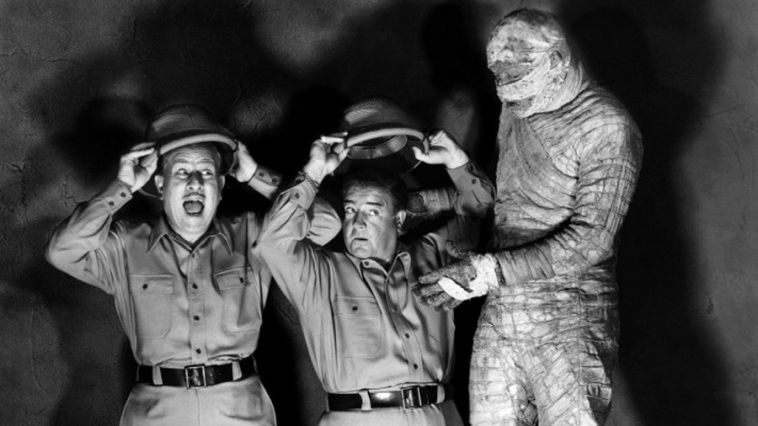
Abbott and Costello Meet the Mummy, Maybe
Out of all the Universal monsters, I consider the Mummy the most consistently entertaining. The series quickly devolves after the brilliant first entry — Karl Freund’s The Mummy (1932), but even the worst of the sequels (I’m looking at you The Mummy’s Tomb from 1942) maintain a reasonable sense of the original’s mystical paranoia and creeping dread. There’s comfort in predictability.
The catch here is that the mummy has to actually appear in your movie and, you know, occasionally attack people. In Abbott and Costello Meet the Mummy, you see some Fez hats, Casablanca-looking bars, bazaars, snake charming, and grandfathers of the Brotherhood of the Cruciform Sword from Indiana Jones and the Last Crusade. None of which really do any attacking. What you rarely see are mummies. At least not until the last fifteen minutes when you get three of them, including Bud Abbott dressed up as one of two bumbling decoy mummies.
In both Abbott and Costello Meet Frankenstein and Meet the Invisible Man, the films maintained the basic tenants of their respective horror cycles. Meet the Mummy meanwhile feels like a standard mistaken identity caper. It could have been called Abbott and Costello in North Africa with a Chance of Mummy.
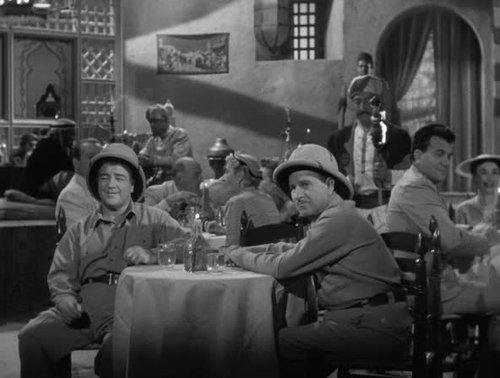
Are You My Mummy?
The lack of an effective horror backdrop for Abbott and Costello means that they’re comedy has to be the centerpiece, but they’re just not given scenarios that seem to benefit the characters. Or their established personalities (except rigid Abbott as a mummy). Or whomever they’re actually playing. In this entry, they play Pete Patterson and Freddie Franklin, but intermittently refer to each other as Bud and Lou and Abbott and Costello.
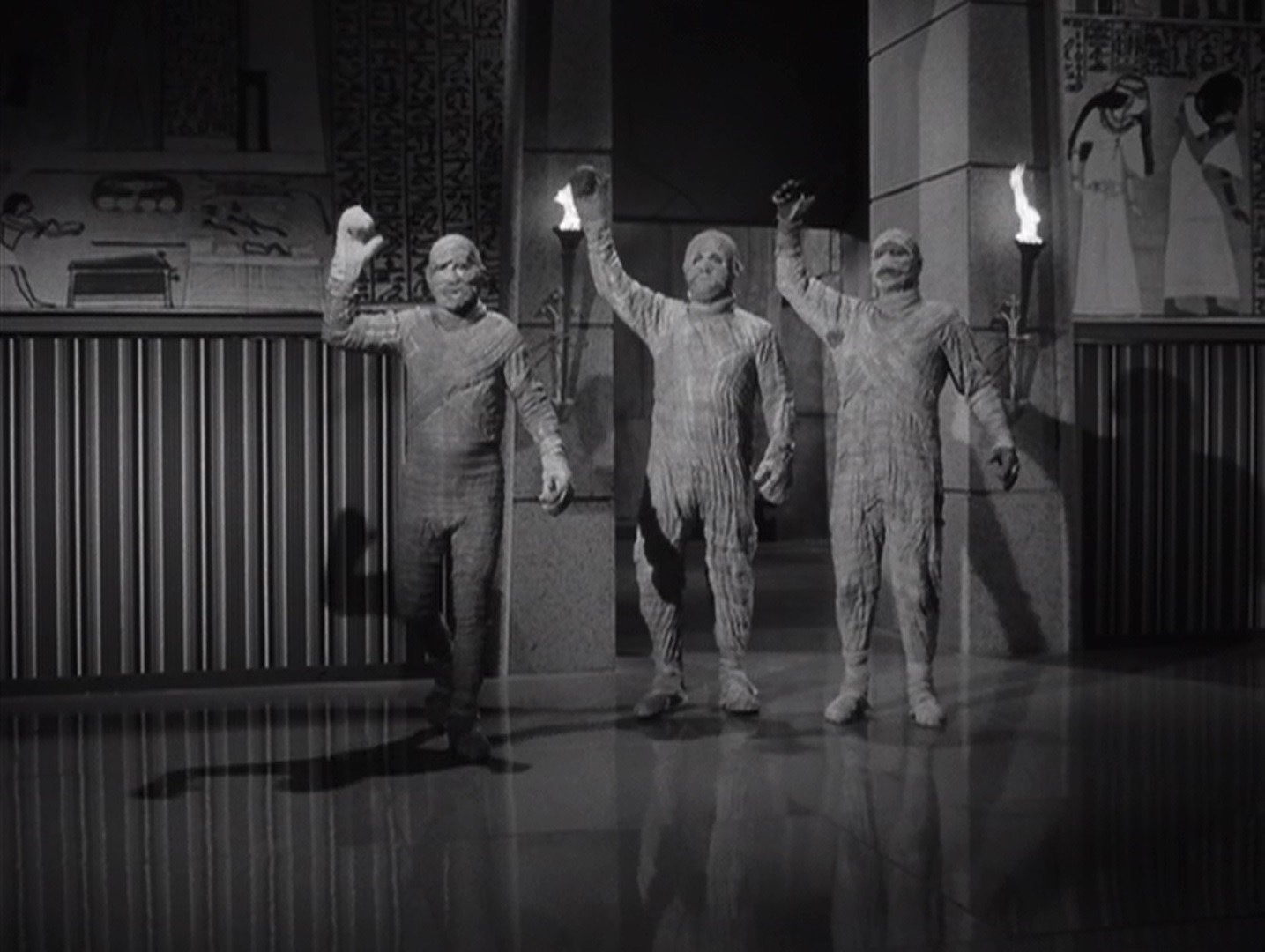
The strongest example of this failure takes place during the madcap finale — which becomes so complicated and labyrinthine that it lost me. That’s right. The narrative machinations of an Abbott and Costello movie left be confounded. The last time I would have watched this film I’d have let it wash over me because Abbott and Costello. On this occasion, I became preoccupied with my inability to follow how or why this person was going after this person and why the mummy cared and holy hell that’s exhausting because why did I really care in the first place?
I don’t know. THIRD BASE.
The routine drags on and on as the movie introduces two dummy mummies to create a kind of Jack Benny in a pyramid scheme. (Pyramid scheme! I crack myself the &%#$ up.) So of course, Lou’s going to commandeer the real mummy that he thinks is Bud. That’s all I need out of this gag. Alas, we get that and a shroud of diminishing returns.
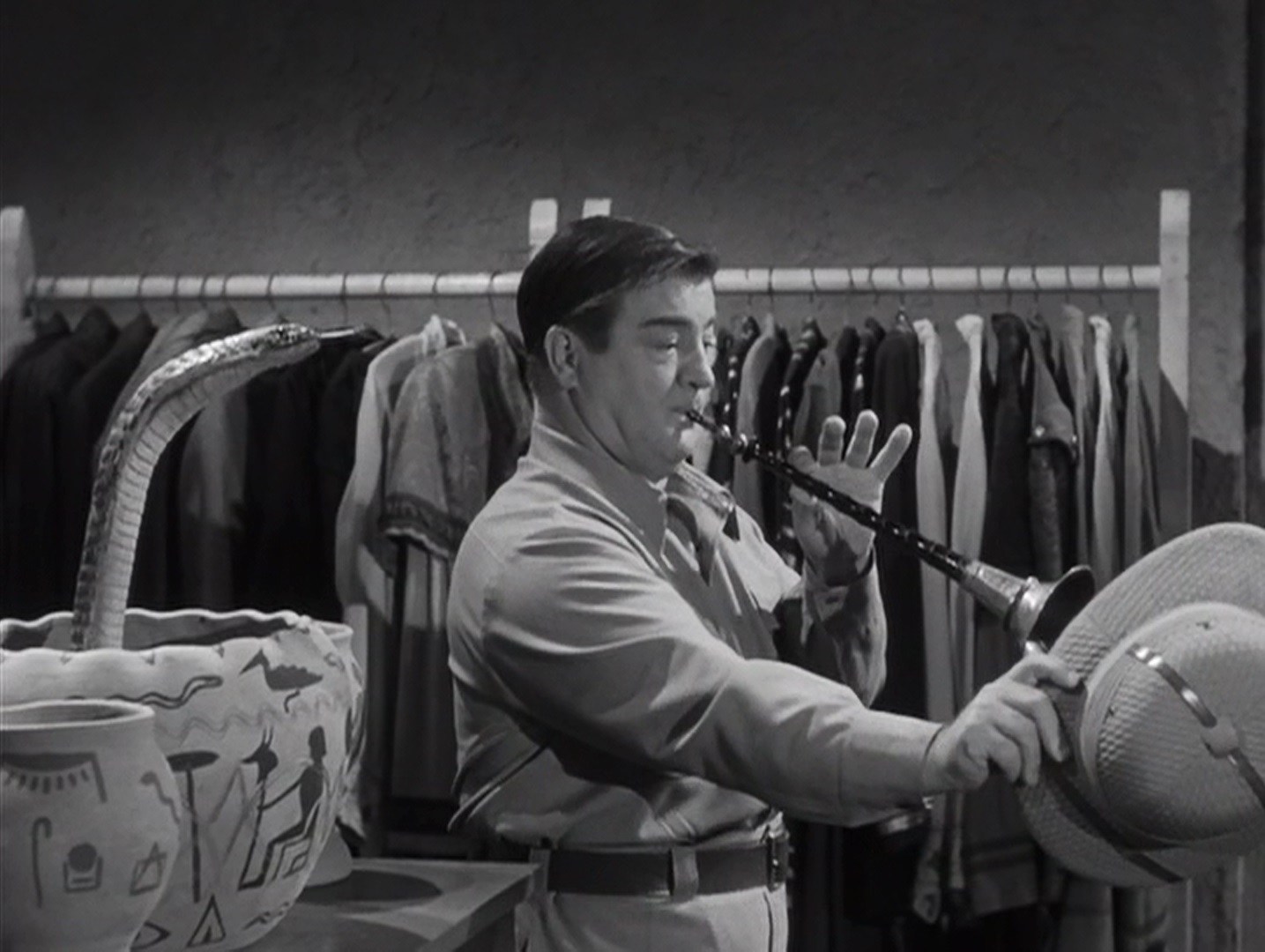
Final Abbott and Costello Meet the Mummy Thoughts
I recommend Abbott and Costello Meet the Mummy not because it’s essential comedy horror but because it’s a career touchstone for the duo Abbott and Costello. It’s the last of their horror comedies, their last film with Universal (the compilation film The World of Abbott and Costello, excepted) and their second to last film overall. They made one final movie, Dance With Me, Henry, for United Artists in 1956.
Abbott and Costello Meets the Mummy also represents the final stop for the Universal Mummy monster until Stephen Sommers’ The Mummy (1999). The undead Egyptian has always been relegated to the second tier of Universal monsters. Some of that has to do with the limited scope of the mythology. Most every Mummy movie derives from the narrative created for The Mummy in 1932. Hammer Films expanded the monster slightly with their series of films between 1959 and 1971 based on the 1930’s-era Universals.
Despite the limitations, movies featuring the monster prove to be effective chillers, relying heavily upon mood and atmosphere rather than narrative. Abbott and Costello Meet the Mummy offers neither in equal measure — but it does offer Bud Abbott and Lou Costello and a bittersweet send off to their series of horror comedies.
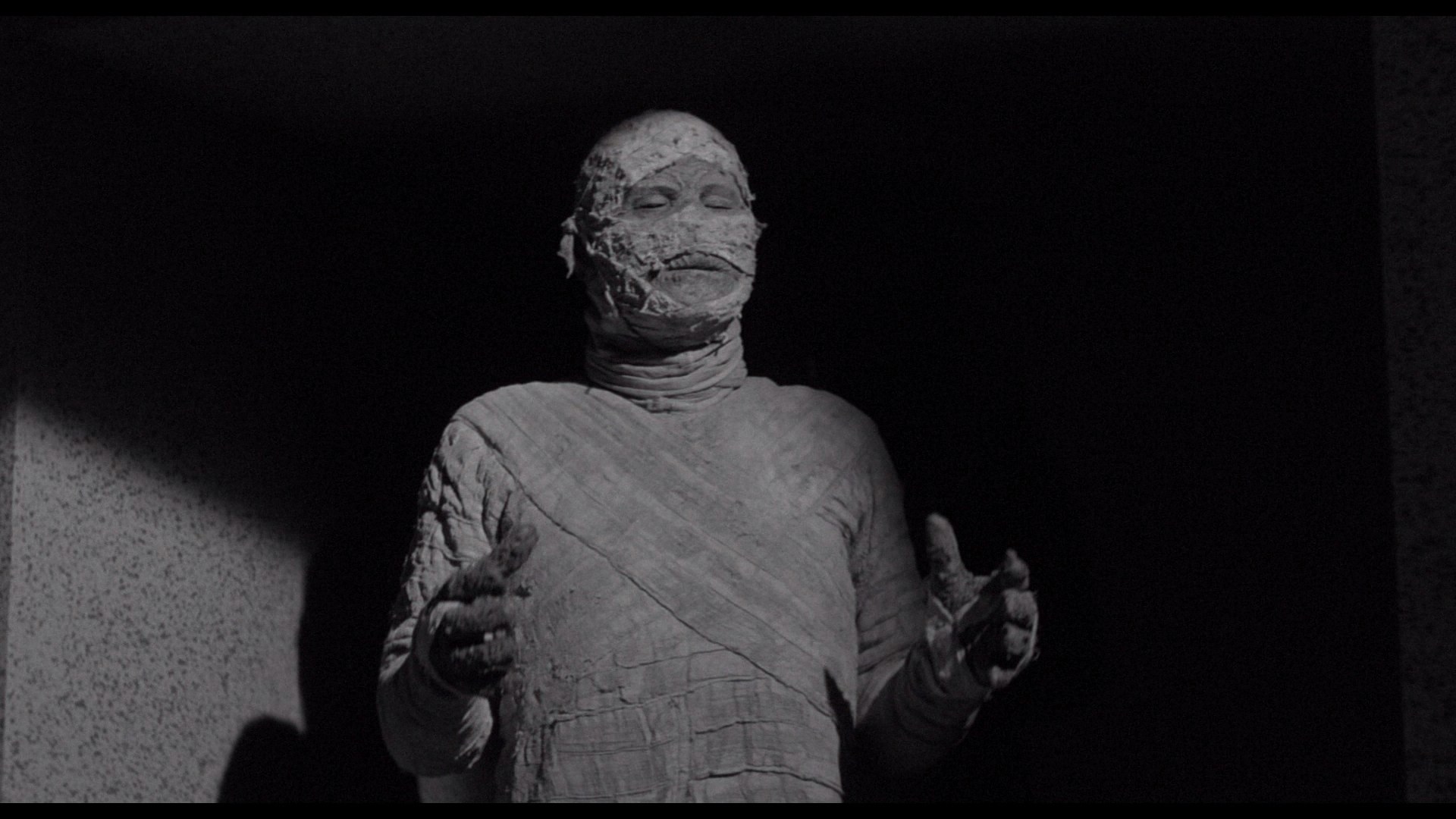
Abbott and Costello Meet the Mummy Rating:

Availability:
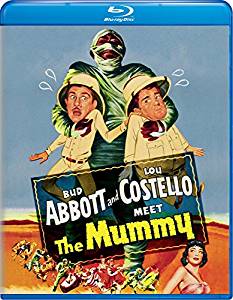 Universal has given you plenty of Abbott and Costello Meet the Invisible Man options. There’s the standalone release. It’s also included on The Mummy Complete Legacy Collection.
Universal has given you plenty of Abbott and Costello Meet the Invisible Man options. There’s the standalone release. It’s also included on The Mummy Complete Legacy Collection.
If you’d like a complete collection of the Abbott and Costello Meet… movies, that’s more difficult. There’s the brilliant (but OOP) 28-film Abbott and Costello: The Complete Universal Pictures Collection steamer trunk. The Meet the Monsters DVD set contains Meet Dr. Jekyll and Mr Hyde (which is currently not available on Blu-ray), but is missing Abbott & Costello Meet the Killer, Boris Karloff because… I have no idea. In order to get that one, you’d need to purchase The Best of Abbott & Costello, Vol. 3 DVD. Got that?
2018 @CinemaShame / Hooptober Progress
#1. Deep Rising (1998)
#2. The Mist (2007)
#3. Abbott and Costello Meet Frankenstein (1948)
#4. Abbott and Costello Meet the Invisible Man (1951)
#5. Abbott and Costello Meet the Mummy (1955)
James David Patrick is a writer. He’s written just about everything at some point or another. Add this nonsense to the list. Follow his blog at www.thirtyhertzrumble.com and find him on Twitter, Instagram, and Facebook.

